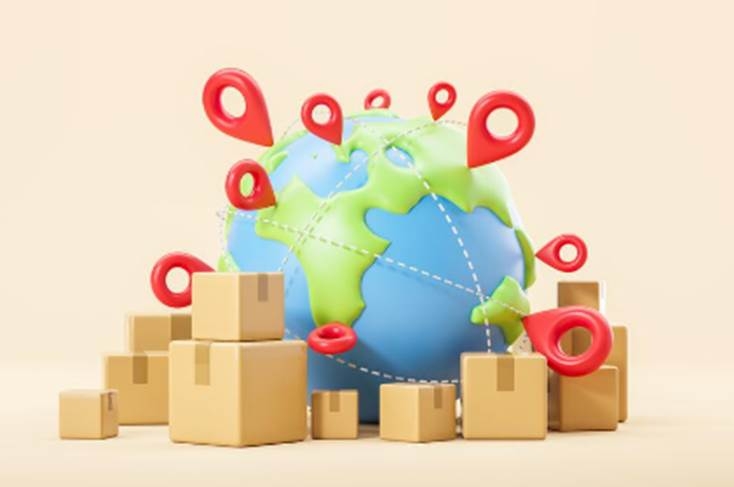In the past, many people thought "Made in China" was a symbol of low price and poor quality. But now, sourcing from China is not what it used to be. Factories produce faster, wholesale marketing is more competitive, and the profit margins for buyers are narrower.
However, for companies around the world, China's supply chains are still irreplaceable - provided you know how to exploit them.
What's the secret? It is to abandon the old model and adopt a strategy that is in line with the pace of development today. Now let's look at how to find the key points in the maze of information in 2025.

5 Reasons China Wholesale Markets Dominate in 2025
1. Unmatched Product Clusters & Vertical Specialization
China's market wholesale ecosystems thrive on geographic concentration of industries that few global competitors can replicate. Cities have evolved into hyper-specialized hubs where entire supply chains coexist: from raw material suppliers to component makers and finished goods assemblers.
Yiwu's labyrinthine markets offer over 2 million SKUs of small commodities, while Shenzhen's Huaqiangbei district operates as a self-contained tech universe where smartphone components can be sourced, prototyped, and assembled within a 5km radius.
2. Structural Cost Leadership
Unlike newer manufacturing hubs where labor costs dominate pricing, China's advantage stems from interconnected efficiencies: localized raw material networks, energy subsidies for export-oriented factories, and economies of scale in containerized shipping.
Bulk purchasers particularly benefit from tiered pricing models where orders exceeding MOQs automatically trigger supplier alliances to share production loads.
3. Adaptive Logistics DNA
The "24-hour readiness" culture sets Chinese wholesalers apart. Coastal China wholesale markets in China like Guangzhou leverage round-the-clock port operations to implement just-in-time exports, where afternoon orders routinely catch same-day vessel departures.
Inland hubs compensate with multimodal agility, such as Chengdu's wholesale market seamlessly switches between rail freight (for EU-bound electronics) and cross-border trucking (for ASEAN perishables). This infrastructure isn't merely about having roads or warehouses, but about ingrained operational flexibility.
4. Hybrid Wholesale Sourcing Architectures
Physical market savvy now blends with digital precision. At Guangzhou's Liuhua fashion market, buyers inspect samples onsite while AI-powered dashboards simultaneously analyze real-time inventory across 2,000+ connected factories.
Shenzhen's electronics suppliers have pioneered "phygital" verification–QR codes on component bins link to 3D manufacturing specs and live factory floor cameras. This duality allows customization at online wholesale market volumes, a capability still rare in emerging markets.
5. Self-Reforming Supply Chain Ecosystems
What truly sustains China's dominance is the organic interplay between manufacturers, logistics providers, and innovation enablers.
Semiconductor hubs like Shanghai host concentrated networks where testing labs, precision tooling suppliers, and export certification agencies operate within walking distance of wholesale markets. This creates a "plug-and-play" environment where new product development cycles are dramatically compressed through immediate access to complementary services.

Top 5 Wholesale Markets to Visit in 2025
Each hub embodies China's wholesale evolution: hybrid physical-digital operations, niche specialization, and ecosystems that compress supply chains.
From Huaqiangbei's hardware tinkerers to Keqiao's textile futurists, these markets aren't just sourcing destinations—they're innovation accelerators shaping global trade in 2025.
Yiwu International Trade City–The Global Commodities Nexus
Yiwu's sprawling marketplace remains unmatched for small commodity sourcing, housing over 50,000 specialized booths that connect buyers to factories producing everything from holiday decor to kitchenware.
The market's integrated logistics network and hybrid sourcing model—combining bulk purchases with customizable small orders—make it indispensable for retailers seeking agility in volatile markets.
Shenzhen Huaqiangbei–Silicon Valley of Hardware Innovation
Huaqiangbei isn't just an electronics hub; it's a living ecosystem where component suppliers, prototyping labs, and tech startups coexist.
For buyers, this means access to cutting-edge IoT devices, robotics parts, and consumer electronics prototypes, all within a 5km radius. Its recent tech-driven upgrades, including AI inventory dashboards and QR-enabled factory verification systems, streamline cross-border procurement for hardware startups and established brands alike.
Keqiao Fabric Market – Textile Industry's Command Center
Keqiao's strength lies in its vertical integration. From sustainable bamboo fibers to luxury silk blends, the market's suppliers cater to fast fashion giants and haute couture houses.
Recent shifts toward eco-friendly materials and digital sampling tools (e.g., 3D swatch libraries) allow designers to source ethically while reducing lead times. Its proximity to Hangzhou's garment clusters creates a seamless pipeline from raw material to finished apparel.
Guangzhou Baiyun Footwear Market–Footwear's Agile Playground
Baiyun's footwear district thrives on specialization: athletic wear factories cluster near avant-garde design studios, while accessory vendors offer everything from biodegradable soles to AI-fit insoles.
Its export-ready infrastructure—think same-day sampling and bonded warehousing—makes it a top choice for brands balancing speed and quality.
Shanghai APAC Fashion Market – Fast Fashion's Laboratory
Emerging as Asia's answer to European fashion hubs, this market blends hyper-local streetwear brands with AI-driven trend forecasting.
During Shanghai Fashion Week, buyers witness tech-infused showcases—think VR-runway previews and robotics-integrated garments—while accessing factories capable of turning designs into bulk orders within weeks.

How to Source Smartly in 2025: Pro Strategy
1. Vet Suppliers Strategically
• Prioritize suppliers with proven compliance records and transparent production practices.
• Leverage localized networks to minimize risks.
• Conduct on-ground audits or partner with agents to verify factory capabilities, ethical standards, and scalability. (EJET's multi-stage inspections ensure quality alignment.)
2. Embrace Customization & Innovation
• Opt for suppliers offering tailored solutions (private labeling, product modifications) to differentiate your brand.
• Collaborate with sourcing specialists to transform ideas into market-ready products without overcommitting resources.
3. Prioritize Quality Assurance
• Implement rigorous quality checks at every stage: pre-production sampling, in-process inspections, and pre-shipment verification.
• Use data-driven metrics to track defects and refine supplier performance. (EJET's 3-stage inspection system safeguards against substandard deliveries.)
4. Streamline Logistics Proactively
• Integrate warehousing and order processing to reduce lead times and avoid stockouts.
• Partner with agents experienced in navigating global shipping complexities. (EJET's end-to-end logistics ensure timely delivery to any destination.)
5. Leverage Flexible Payment Models
• Negotiate supplier terms (e.g., staggered payments, bulk discounts) to improve cash flow.
• Utilize secure escrow services or agent-managed transactions to mitigate financial risks. (EJET's negotiated pricing and payment flexibility optimize cost efficiency.)
6. Adopt Technology-Driven Procurement
• Utilize smart tools for supplier comparisons, market trend analysis, and inventory forecasting.
• Partner with agents offering data-backed strategies (e.g., EJET's AI-powered product recommendations) to align sourcing with demand.
Why EJET Fits Your 2025 Strategy?
With nearly two decades of China-sourcing expertise, EJET Procurement embeds these strategies into its service framework. From supplier vetting to final-mile delivery, EJET's localized knowledge, tech-driven processes, and dedicated specialists eliminate guesswork, allowing businesses to focus on scaling profitably.
Whether you're navigating emerging product trends or optimizing supply chains, EJET's tailored approach ensures agility and resilience in a dynamic market.
_1745291273156.jpg)
Conclusion
Navigating China's 2025 sourcing landscape demands more than just a checklist—it requires a partner who understands the nuances.
At EJET Procurement, we've spent nearly two decades refining strategies that turn challenges into opportunities.
Why EJET Stands Out?
- Speed + Precision: Local teams on the ground in China's key hubs act as your eyes and ears.
- Cost Control: Bulk pricing and flexible payment terms (e.g., staggered payments) free up your cash flow.
- Tech Edge: Our smart sourcing tools analyze trends to recommend profitable products, like predicting 2025's Easter bestsellers.
Ready to Upgrade Your Sourcing?
The client said, “Switching to EJET was a game-changer. They handle the complexities; we focus on growing sales.”
Contact EJET today—let's build your 2025 strategy together!
All images sourced from Online.




_1752054901748.jpg)









